- Renewable Energy
- Posted
Heat of the Moment
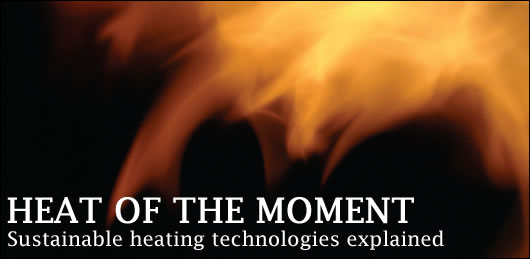
With floods of new products continuously adding to the eco friendly heating market, the energy and environment conscious consumer, developer or specifier can find it difficult to work out which option best suits their needs. John Hearne spoke to a number of independent energy experts to develop an impartial view of the main sustainable heating options.
Before you consider any heating system, the first priority is to reduce your home’s energy requirements to the absolute minimum. High quality insulation materials correctly installed will do far more to reduce energy bills and CO2 emissions than any heating system on the market. Wood pellets and chips, electricity, gas, oil; system maintenance. All of these things cost money. Insulation, once fitted, can be forgotten yet will continue to conserve energy long after it has paid for itself.
The second priority is getting the system or combination of systems correctly installed by qualified professionals. You might have the most state-of-the-art kit in the world, but if it’s set up by someone who is not thoroughly familiar with it, it will not deliver. Crucially, it’s not enough simply that the installer be on SEI’s registered list for the purposes of its Greener Homes scheme. To get on the list, you need a tax clearance cert, you must agree that in the event of a dispute you will enter into an arbitration process and you have to allow your installations to be inspected by SEI. But, the application notes, “SEI has not sought to check the qualifications of the installers registered on the Registered Installer List. There is currently no professional qualification/certification procedure in place for installers under the Scheme. Verification of an installer’s qualifications is a matter for each applicant.” Let the buyer beware.
Dick Whelan of Renewable Energy Skills says it’s very important to make sure your installer has been trained. “Make sure you get reference sites from whatever installer you’re choosing and get multiple reference sites and check up on those references because that’s the only way you can ensure that that guy has installed a system before.” Always seek at least three quotes before choosing. If a quotation seems too good to be true, it probably is.
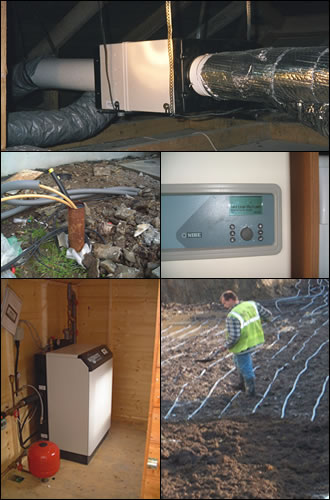
Clockwise from top

It’s also well worth considering a combination of systems: a wood pellet boiler backed up by a set of solar panels, or a heat recovery ventilation system and a ground source heat pump. Taken together, two technologies can deliver a better average payback period than one on its own.
Heat pumps
Ground source or geothermal heat pumps are one of the most efficient heating technologies there are. Latent solar energy extracted from the ground is boosted to a usable temperature by an electric compressor. Because typically it takes one unit of electricity to deliver three to four units of heat, you get efficiency ratings of 3 to 400%, compared to 70% to 90% for a conventional boiler and 15% to 30% for an open fire.
Ground source heat pumps go hand in hand with under-floor heating. For instance, you run the system at night – taking full advantage of night-rate electricity – and the thermal mass of the concrete slab then slowly releases the heat during the day. As far as running costs go, that dependence on night-rate power is absolutely crucial. You cannot however rely on it exclusively. In a domestic setting, the greatest heat demand generally occurs towards evening, so a daytime boost is essential. Some vendors say these systems will need half daytime, half night-time running to work effectively. Others say a mix of two thirds night rate to one third day rate is sufficient. Ensure the vendor spells this out explicitly. “It’s under-floor in most cases because you can store it when you have it available.” says Peter Keavney of the Galway City Energy Agency. “A compromise can be made where you’ve got under-floor in the ground floor and radiators upstairs, but you would be looking at oversized radiators because of the lower temperature of the supply.”
What about longevity? How long can you expect these systems to last? “I would expect them to last about twenty years”, Keavney states. “They’ve a given lifespan of about fifteen to twenty-five years but I can quite comfortably say we’ll see a lot of them well into the future…The only moving parts that are in them is the compressor which can be replaced quite cheaply…I have one in myself since 1997, and it has never been opened to check it…Every year, I press the button and off it goes.”
As far as appropriate applications go, you need adequate external space if choosing a horizontal collector, so many suburban and urban settings are out. Moreover, once pipes have been lain and backfilled, you cannot subsequently use the space for building or growing anything with a deep root structure. Geothermal systems have become popular in office settings, where daytime occupancy allows greater dependence on cheaper night time running. In general, using geothermal in conjunction with under-floor, because you are not getting heat on demand, takes some planning. Conversely of course, once usage patterns are established, these systems facilitate a high degree of automation. Set the controls and forget about it.
The downside of a heat pump is its reliance on electricity. “Our electricity comes from fossil fuels so that’s where the technology falls down.” Says energy consultant Andy Wilson. “It doesn’t really give us any greater independence from fossil fuels and if it does, it’s extremely marginal. Although the heat pump might be 300% efficient...the power stations are only about 38% efficient.”
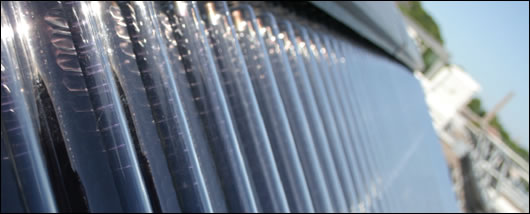
Evacuated tube solar collectors
If a heat pump technology is the preferred choice but the ground is unsuitable for a horizontal array, or if the space just isn’t available, a vertical collector is an option. Though the SEI grant available is higher than for the horizontal collector, this is a considerably more expensive option. Peter Keavney points out however that there may be circumstances where the economics stack up a little better in favour of a vertical array. “It’s very cost effective if you’re doing one-off houses in the countryside where they’re actually integrating the borehole with their supply of water, where you were drilling down anyhow and you’ve got a drill onsite.” The third option is the water source heat pump, in which the collector is installed and energy extracted from a body of water such as a pond or a well.
Other heat pumps
While horizontal loop systems may not be suitable in some tight sites, air to water and air to air heat pumps do offer this technology to smaller houses and apartments with space restrictions. The operating principles are essentially the same, except instead of extracting energy from the ground, it’s extracted from the air. In addition to extending heat pump technology to space-restricted situations, air to water pumps may also be suitable for retrofits, if only because you don’t have dig up an established garden. As before however, insulation levels in the house are absolutely crucial. Retrofitting any green technology in a poorly insulated, leaky house is a waste of energy and money.
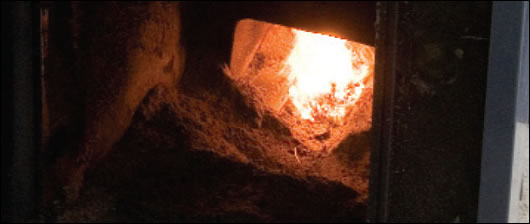
A wood pellet boiler with door open to show burning
A separate family of heat pumps is configured to use internal exhaust air. These are considered below with heat recovery ventilation systems.
Heat recovery ventilation (HRV)
Houses need to breathe, but traditional ventilation methods – a dressed up term for holes in the wall – compromise insulation and can drastically reduce the energy efficiency of the building. Heat recovery ventilation is one solution. As the stale air from kitchens and bathrooms is exhausted, it passes through a heat exchanger and the heat energy from that air is transferred to the incoming cold air. You lose foul exhaust air and get back filtered clean air, pre-warmed and less humid, eliminating the risks of condensation and mildew build-up. Ducting installed during construction conveys air into a heat exchanger usually located in the utility room, where the energy exchange takes place. The warmed air is then distributed into the occupied areas of the house.
Alternatively, the mechanical ventilation system can convey the waste air from the foul areas of the house to an air source heat pump, where the energy is extracted and used for both space and water heating. In combination with the pre-installed ducting, one unit then takes care of heat recovery ventilation, along with all space and water heating needs.
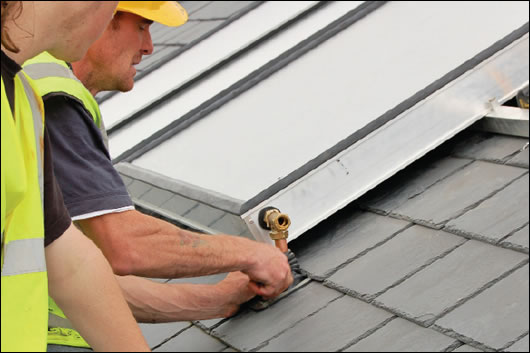
A flat plate solar collector being installed
In the case of both HRV and exhaust-air heat pumps, it is absolutely crucial that the house be well insulated and air-tight. An air-tightness membrane installed during construction will seal the outer envelope of the structure and create the right conditions for the technology to work properly. “Putting heat recovery ventilation into a leaky house,” says Peter Keavney, “is actually going to increase the energy on the fans, so the actual overall energy consumption of the house will go up with HRV on a leaky house. You have to have it extremely air-tight.” Because HRV is so dependent on air-tightness, both technologies have to be specified at the design stage. As a result, retrofitting is probably not the most appropriate application of the technology. And again, because HRV relies on air-tightness, one opened window makes the technology worse than useless. If winter window-opening is a habit you can’t break, forget HRV.
Solar panels
In an Irish setting, solar panels are used typically for water heating, although some systems are tailored for space heating. A correctly sized unit, properly oriented, can provide over 60% of a household’s annual hot water requirements.
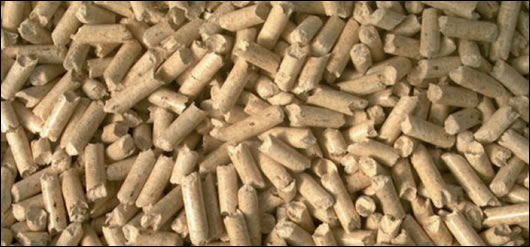
Wood pellets
Orientation is the key variable. A southerly aspect, with no overshadowing by trees or buildings, is best, though a deviation of 45 degrees due east or west of south will not significantly decrease performance. Of the two types available, evacuated tube are more efficient than flat plate panels, though there are circumstances when flat plate may be more appropriate. “It’s down to the client.” Says Seamus Hoyne of the Tipperary Energy Agency. “Evacuated tube panels will always have to sit on top of the roof. They can’t be inlaid as part of the roof, whereas most of the flat plate systems can be integrated into the roof so they don’t protrude up…If you’re restricted in space, you will get more energy from a smaller area of evacuated tubes compared to your flat plate.” He notes too that if the orientation of your roof is wrong, you can instead opt to mount them on a frame on the ground. “Typically your flat plate system would be a little bit more robust in terms of if you have children out playing hurling or something like that. But saying that, the evacuated tube has more flexibility in that it will give you greater output if it’s not faced to the optimum position because of the fact that the tubes can capture energy across their whole circumference” While solar panels are used primarily for heating water, integration with a central heating system can provide some element of back-up during bright, cold winter days.
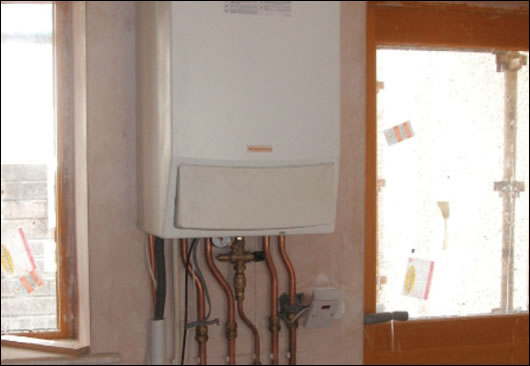
A high efficiency condensing gas boiler
Once again, the same caveats apply. “The biggest factor affecting the efficiency of those systems,” says Andy Wilson, “is how well they’re installed and how big a storage capacity they have and how good the insulation is between the collector and the cylinder. Those factors will have a much bigger influence on the system than whether you’ve got a vacuum or a flat plate.” In terms of durability, a good system, well installed, should last twenty years.
Biomass
The broad family of wood burning boilers and stoves is among the most popular of the new technologies. Alex Grassick of the Cork County Energy Agency points out that these systems compare most readily to oil or gas. That recognisability factor provides a certain level of comfort, and as a result, a large number have been retrofitted in recent years. “It works equally well with radiators or under-floor.” Says Grassick. “And because the fuel’s cleaner, they should last at least as long as a conventional oil boiler.”
Wood pellet stoves and boilers work in a wide variety of settings, from rural houses with ample space to city apartments with very little. “They’re applicable to any situation.” Says Peter Keavney. “When we look at apartments or smaller houses in urban locations, we’re looking at a very much smaller unit. If you’re in and around 80 to 100 square metres, you can actually look at a small stove with a back boiler.” These small systems, once properly sized and installed can be used to deliver sufficient heat to radiators or under-floor. “Because you have a very small system you can burn something like a ton and a half or two tons of pellets a year, so therefore it’s quite appropriate to be buying that in bags, say ten bags at a time, delivered to your doorstep, the same as you did with coal, except we’ve got very high efficiencies.” Ten bags, Keavney points out, can fit comfortably under the stairs. “People buy bales of briquettes; there’s nothing different in this.”
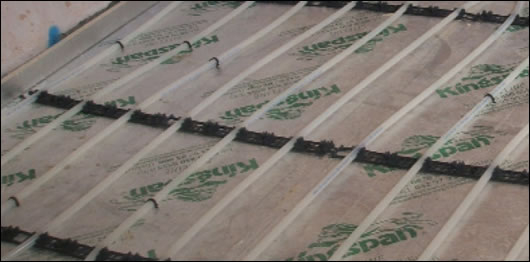
Underfloor heating pipework
Bulk buying does substantially improve the economics. Currently, with the wood pellet market still in its infancy, most suppliers will only deliver bags in one ton loads and loose pellets in three ton loads. To really make savings therefore, you need storage. “You do have to be careful buying in bulk that you’ve got not just adequate storage but you’ve got a storage area that will not allow any deterioration of the pellet with respect to moisture content, so you need to have a good dry store. Buying them in bags means that you’re eliminating that, because you can leave them in the bags until they’re ready for use. They will never absorb moisture in bags. The thing that people miss is the more moisture in it, the more pellets you need to burn to get the heat.” It’s also essential to ensure that the pellets themselves are of good quality. Check the packaging for certification and detailed fuel analysis.
Wood pellet stoves and boilers aren’t entirely maintenance free. While pellets are smokeless and leave very little ash, the burner will have to be cleaned out periodically. Many boiler systems are highly sophisticated and feature automatic feeds and augurs that facilitate self-fuelling. They ignite automatically and operate without manual intervention. Many models now allow the system to be operated remotely by mobile phone, and, used in conjunction with radiators, provide heat on demand.
Other biomass options tend to require considerable space. On balance, you need three times as many wood chips as pellets to deliver the same heat, and without the right storage conditions, those chips will deteriorate rapidly. For ecological purist, Andy Wilson, the log burning gasifier is his biomass technology of choice. “They’re basically log boilers so instead of burning wood chips or pellets, they burn logs. They’re no different in simplest form to the solid fuel stove, but it’s much bigger and heats a huge capacity water cylinder, a thermal store, which heats the house. You fire in two or three days supply in one go, let it burn out and that’ll have maybe 2000L of water warmed up.” That water is then circulated through the heating system. There is no automatic feed as with some pellet boilers, and the fuel is not pre-processed, therefore there are less C02 emissions. You do however need a large space both to house the system and the tank. These systems, it should be noted, are not grant-aided by SEI.
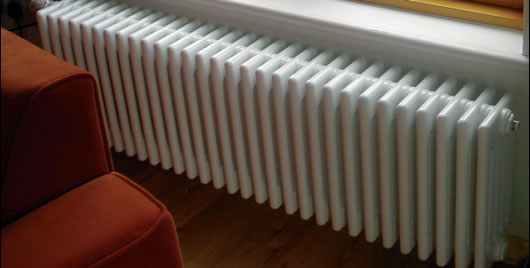
Low energy, low water radiators
Wood pellet supply
If you install a pellet boiler, can you be guaranteed an adequate supply of reasonably priced pellets?
The evidence suggests that both supply and price of pellets in the years to come will be at least as stable as oil, and probably a great deal more so. Recent supply bottlenecks in the Irish market arose principally because there was a single company, Balcas, supplying a market that mushroomed overnight as a result of Sustainable Energy Ireland’s Greener Home Scheme. Today, while wood pellet boilers continue to be installed at a rapid rate, local supply conditions are improving substantially.
Balcas have just quadrupled their staff, put six new lorries on the road and are in talks with a variety of shops and supermarkets about selling bagged product over the counter. A new Scottish plant will come online next year, freeing up the 50,000 ton capacity of the Enniskillen plant for the Irish market. There is currently a two week wait for bulk delivery. Kedco is a Cork based wood pellet boiler supplier who guarantee supplies of pellets in perpetuity to its customer base. Though the company currently ships the pellets in, they have recently acquired a sawmill in Latvia which will be adapted to produce 50,000 tons of pellets annually for the Irish market. There is currently a five-day wait for bulk delivery. Another new company, Irish Pellets, will begin production at its €6m, 120,000 ton Clara facility during the summer. Other companies have similar plans in the pipeline.
In the medium term, domestic supply and demand metrics will probably have as much bearing on the price and stability of supply as they do on oil. That is, very little. Wood pellets have become an internationally traded commodity, whose price is determined on world markets. All 120,000 tons due this year from Irish Pellet’s Clara facility has been pre-sold, mostly on the Italian market. It may seem counter-intuitive, but company MD Brian Smith explains that in order to secure financing for the new plant, pre-sale contracts had to be put in place, and the Irish market currently can only absorb between 42,000 and 44,000 tons. In the meantime, other local suppliers are shipping in product from places like Canada, which means that householders living in the shadow of the Offaly plant may well be burning pellets shipped 5,000 odd miles across the Atlantic.
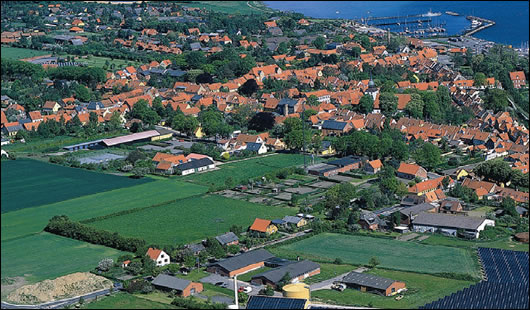
A large scale solar heating and biomass plant featuring 4900 m2 of solar panels, Aeroeskøbing, Denmark - Photos: ARCON / ESTIF
Essentially, the supply of oil is finite and the supply of wood pellets is considerably less so. Despite recent delays and supply-scares, it is logical to expect that the supply of pellets will become ever more secure in the months and years ahead.
Condensing boilers
Condensing gas and oil boilers may burn fossil fuels but they do so in a far more efficient way than conventional boilers, achieving efficiencies of up to 96%. In traditional boilers, around 20% of the waste generated by combustion is expelled into the atmosphere at temperatures of about 150 degrees. A condensing boiler has a much more efficient heat exchanger which extracts the maximum amount of heat from the burned fuel. Many of these boilers also feature ‘weather compensation’. A sensor attached to an external wall monitors the outside temperature and moderates the boiler temperature in milder conditions, thereby allowing the system to operate with greater efficiency. These boilers are small and self contained and are ideal in situations where space and storage is particularly tight. They’re also a good option in houses that are used intermittently.
SEI’s Greener Homes Scheme
The levels of grant support available for each technology are as follows:
• Solar thermal space and or hot water heating €300 per m2 (to max. 12 m2)
• Heat pump - horizontal ground collector €4,300
• Heat pump - vertical ground collector €6,500
• Heat pump - water (well) to water €4,300
• Heat pump - air source €4,000
• Wood chip or pellet Stove €1,100
• Wood chip or pellet stove with integral boiler €1,800
• Wood chip or pellet boiler €4,200
Note too that it may be possible to apply for a second grant where the combination of technologies makes sense in terms of reduced overall CO2 intensity, capital costs, value for money and operating service.
Open fires
Despite their appalling efficiency ratings (15% to 30%) people love open fires. Apart from the fact that an open fire is a poor choice of heating system, when not in use, it constitutes a glaring breach in a house’s insulation. Moreover, building regulations require direct ventilation into a room with an open fire. Again, this is essentially a hole in the wall, one which seriously compromises the energy efficiency of the house. The answer in the chimney closure. “I can pull a chain here,” says Peter Keavney, “and close down my chimney. When you’re not using the fire, it can be closed down 99%. They leave a tiny little trickle going through it because what you don’t want is condensation happening in the flue liner of the chimney because that will drop down as pure black water into your fireplace. You can open it up fully when you’re lighting the fire, and then once you’ve got a good combustion within the fireplace, you can close it down 50% or 75% and that throws the heat back into the fireplace, and you’re increasing the efficiency by about up to 60% or 70%.” Instead of a hole in the wall, consider bringing ventilation ducting up to the hearth through the floor screed and closing over the opening when it’s not in use.
Heat distribution technologies
Under-floor or radiators? The choice depends in part on the technology you’ve chosen and in part on the use to which the house will be put. Under-floor heating is, arguably, essential with a heat pump. You get luxurious, healthy heat, but at a cost. Moreover, you have to plan your heating arrangements with under-floor; you don’t come home, turn it on and expect instant heat.
In installing an under-floor heating system, Seamus Hoyne of Tipperary Energy Agency once again highlights the importance of good practise. “Our recommendation is that whenever the under-floor is going down that you have somebody independent scrutinising exactly what’s happening because if you put down the best materials in the wrong way your system isn’t going to work properly. Most of the problems we come across are related to piping that has been inaccurately spaced, that is too close to the external wall. The loops have been too tight or the system going back to the manifold hasn’t been balanced properly. Most of the systems that are out there are good quality. It’s the actual installation is the key really.” Another essential issue with under-floor is the type of flooring that goes over it. Tiles are the most efficient conductor of heat. Carpet, particularly with a heavy underlay, can seriously undermine the value of the system. Some types of wood flooring will be damaged by under-floor heating and some will be too thick to allow sufficient heat through. Make sure you get good advice from a variety of sources before you commit.
While under-floor heating is one of the most efficient means of distributing heat, advances in technology have drastically improved radiator performance in recent years. “They are improving.” Says Seamus Hoyne. “It’s whether they’re being installed or not is the question. On larger housing developments, the radiators that are going in are probably the middle of the range rads. They’re not bad but they’re not brilliant either. There’s an increasing interest in the old cast iron radiators purely from a fashion point of view. But they’re not particularly efficient. Then, at the higher end, you have developments in aluminium radiators, that have very good outputs for their size. At the end of last year, you started to see these new skirting radiators. These are radiator strips that run along the wall and are integrated into your skirting.” A new range of low-energy radiators has also come onto the market in recent years which claim higher efficiency even than under-floor heating. Alternatively thermostatic radiators complement any heating system by allowing a greater level of individual control and better energy conservation; you set the temperature required on the radiator and it cuts out once that temperature is reached. Thermostatic radiator valves (TRVs) can often be retrofitted on conventional radiators.
District heating systems
“In an ideal world,” says Andy Wilson, “A district heating system fed from a large heat source in the city is the best possible solution. That’s what’s done in Sweden, Denmark and Finland to a large extent. The supply would be metered and you take it as required…No fuel has to be moved around and there are huge economies of scale.” While still very much in their infancy in Ireland, district heating systems are being discussed by developers with increasingly frequency. Seamus Hoyne in Tipperary is currently assisting in the design and installation of a system at the Ecovillage in Cloughjordan, where 132 houses will be served by a combined biomass and solar array. “The key thing,” says Hoyne, “is that it needs to be in the design from the beginning. It’s very difficult to retrofit. Certainly for new build situations, it should be considered from concept. Ideally, you want as high a density as possible to make the economics work.”
From the consumer’s point of view, district heating offers substantial space savings. There are no storage tanks, boilers houses, gas metres or cylinders, while internal plumbing is greatly simplified. Most especially however, the economies of scale can be passed back down the line to the consumer. District heating is cheap heating.
- Articles
- renewable energy
- Heat of the Moment
- sustainable heating
- technology
- explained
- Heating
- heat pumps
- recovery ventilation
- HVR
- solar panels
- biomass
- wood pellet
- condensing boilers
- district heating
Related items
-
Grant integrated heating packages installed for 61 homes in Rathdrum
-
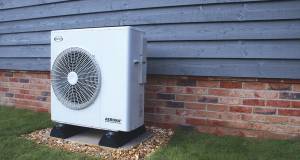 Kildare scheme chooses Grant sustainable heating package
Kildare scheme chooses Grant sustainable heating package -
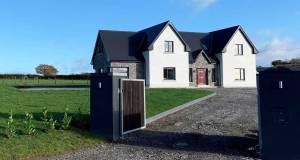 Offaly new build installs Grant integrated heating package
Offaly new build installs Grant integrated heating package -
Is it okay to retrofit heat pumps before building fabric?
-
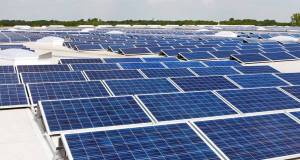 Solar panels to receive VAT drop in aim to boost uptake
Solar panels to receive VAT drop in aim to boost uptake -
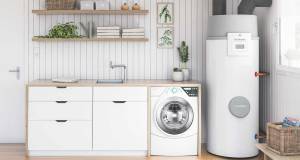 Hevac launches hot water heat pump with green refrigerant
Hevac launches hot water heat pump with green refrigerant -
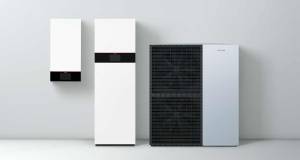 Viessmann launch two new compact heat pumps
Viessmann launch two new compact heat pumps -
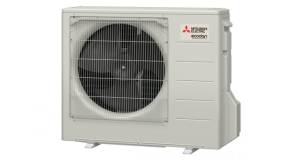 Mitsubishi heat pumps 6-7 times lower CO2 than condensing gas boilers
Mitsubishi heat pumps 6-7 times lower CO2 than condensing gas boilers -
 Major new grants for retrofit & insulation announced
Major new grants for retrofit & insulation announced -
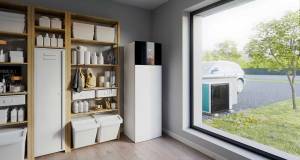 Daikin launches new Altherma 3 R heat pumps
Daikin launches new Altherma 3 R heat pumps -
 Ecomerchant now stocking Herschel Infrared heating products
Ecomerchant now stocking Herschel Infrared heating products -
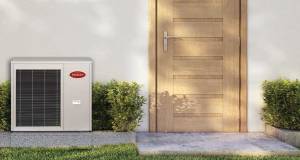 Waterford Stanley launch monobloc heat pumps
Waterford Stanley launch monobloc heat pumps

